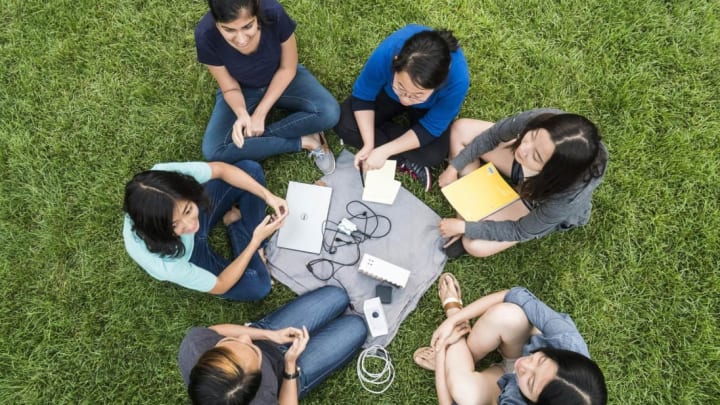For years, scientists have been using technology to leap across language barriers. We’ve seen earpieces that translate spoken conversations and gloves that decode sign language, but when it comes to translating braille in real time there are few options available. A group of undergraduates from MIT are looking to change that with a device small enough to fit in your hand, Smithsonian reports.
Five of the six engineering students (Charlene Xia, Grace Li, Chen Wang, Jessica Shi, and Chandani Doshi—Tania Yu joined the project later) first collaborated on the project at MakeMIT’s hackathon as team 100% Enthusiasm in February of last year. The team won the contest with a braille-translating tool they called Tactile. Using an external webcam, Tactile converted printed text to braille. It displayed the translation one character at a time by poking combinations of pins through its plastic surface.
The team has come a long way since creating the initial prototype, with the latest version of Tactile featuring a built-in camera. Users place the compact box directly over the text they wish to translate and press a button to snap a picture. From there, Microsoft’s Computer Vision API translates the words and conveys the message in braille in six-character chunks. The entire process, from taking the picture to raising the pins, takes roughly the same amount of time as flipping a page.

Tactile recently earned the women the Lemelson-MIT Student Prize and the $10,000 award that comes with it. They plan to use those funds to refine the product and get it commercial-ready within two years. When it hits shelves, the team hopes to sell the device for less than $200—a fraction of the cost of most high-tech braille translators currently on the market. They’ll also be working on ways to make Tactile smaller (right now it’s about the size of three smartphones sandwiched together) and more user-friendly (ideally it will scan an entire page rather than a few lines at a time, and display 18 characters instead of six).
Microsoft is one of the team’s biggest supporters. They’ve been accepted into Microsoft’s #MakeWhatsNext program, an initiative that offers legal assistance to women inventors seeking patents. “There cannot be enough investment in technology that will enable, empower and allow people with disabilities to go and do amazing things,” Jenny Lay-Flurrie, Microsoft’s chief accessibility officer, is quoted as saying on the program's webpage. “I can’t wait to see where this one goes—and I think the patent is a great next step.”
[h/t Smithsonian]
